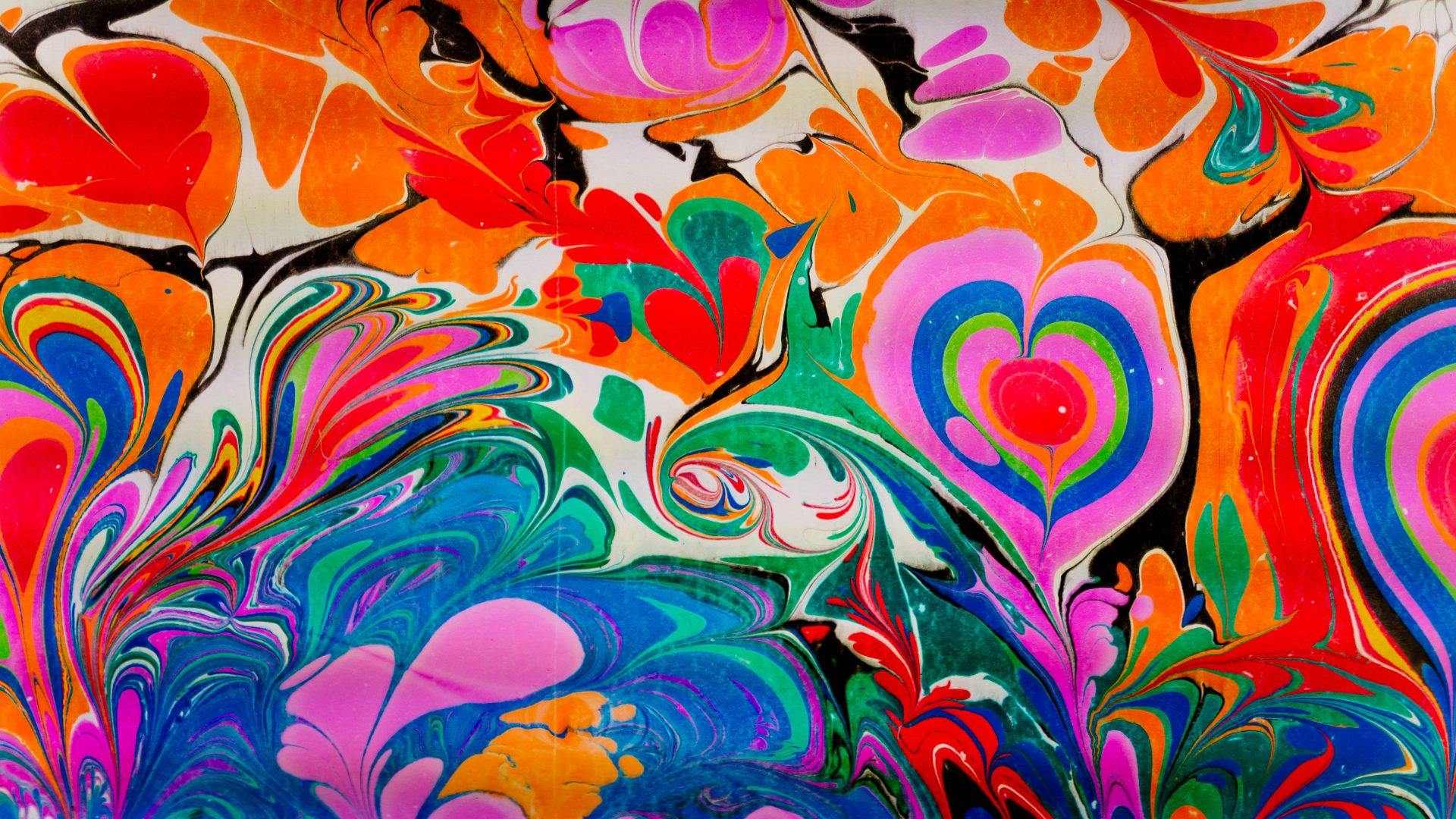The Dutch Empire: A Maritime Power’s Influence on the World

Hey there, amazing readers! 🖐️ Just a quick note: yes, we know there are a lot of ads here. Trust us, we get it—it’s not the prettiest look, but they help us keep this blog alive and kicking. Those pesky little ads cover the costs of all the behind-the-scenes magic, from hosting and tech stuff to creating content we hope you’ll love.
We’re committed to delivering quality posts, and your support (even just sticking around despite the ads) means everything to us. So, bear with us, and thanks for helping us keep the good vibes rolling. Now, on to the fun stuff! 😉
TRANSLATE BUTTON AT THE END OF THE ARTICLE
A Quick Overview
The Dutch Empire was a marvel of maritime prowess.
Spanning the globe from the 17th to the 19th centuries, it became one of the most powerful empires in history.
The Dutch harnessed their exceptional shipbuilding skills, navigational expertise, and an insatiable appetite for trade to carve out an empire that left a lasting imprint on various cultures and regions.
In this article, we will explore the rise of the Dutch Empire, its key figures, trade routes, colonial efforts, and the cultural exchanges that shaped our modern world.
Join me as we embark on this journey through history!
The Rise of the Dutch Empire: A Maritime Adventure
The story of the Dutch Empire began in the late 16th century, during a period of intense rivalry with Spain.
As the Spanish Empire tightened its grip on trade routes and resources, the Dutch sought independence and the opportunity to explore new avenues.
This was the age of exploration, and the Dutch were not going to miss out.
The Dutch Revolt (1568-1648) marked a turning point.
Rebels fought against Spanish rule and took control of key ports and cities.
With independence, the Dutch established the Republic of the Seven United Netherlands in 1581.
This became a launching pad for maritime expansion.
The establishment of the Dutch East India Company in 1602 was a game changer.
It was one of the world’s first multinational corporations.
The company operated with a charter that granted it monopoly rights over trade in the East Indies.
This period saw a surge in shipbuilding and advancements in navigation techniques, which allowed Dutch sailors to explore further and with greater precision.
By the 17th century, the Dutch had become the foremost maritime power in Europe, eclipsing rivals like England and Portugal.
The combination of military might, innovative finance, and skilled navigation fueled the empire’s growth.
The Dutch began to establish a global presence, claiming territories in Asia, Africa, and the Americas.
By the end of the 17th century, the empire reached its zenith, controlling vast trade networks and colonies.
The maritime adventure was not just about conquest; it was about trade and cultural exchange.
Key Players: Influential Figures of the Dutch Golden Age
The Dutch Golden Age was filled with influential figures who played critical roles in the empire’s expansion.
Admiral Michiel de Ruyter was one of the most celebrated naval commanders.
His daring tactics in naval battles helped secure Dutch dominance at sea.
Willem Barentsz, an explorer, made significant contributions to Arctic exploration.
His voyages expanded European knowledge of the polar regions.
Hugo Grotius, a legal scholar, is known for establishing international law principles.
His writings laid the foundation for maritime law.
Jan Pieterszoon Coen, a key figure in establishing the Dutch East India Company, was instrumental in expanding Dutch influence in Indonesia.
Rembrandt van Rijn, although not directly involved in politics, his art captured the spirit of the time, illustrating the wealth and culture of the Dutch Republic.
Peter the Great of Russia admired the Dutch naval techniques and sought to emulate them in his own empire.
Joost van den Vondel, a poet and playwright, contributed to Dutch literature, reflecting the cultural achievements during this period.
Antonie van Leeuwenhoek, the father of microbiology, made groundbreaking discoveries with his microscope, showcasing the Dutch commitment to science.
Cornelis de Houtman was among the first Dutch explorers to reach the spice islands, setting the stage for lucrative trade.
Isaac Beeckman, a philosopher and scientist, blended science and philosophy, enhancing the intellectual climate of the time.
Sailing the Seas: The Innovation of Dutch Shipbuilding
Dutch shipbuilding was nothing short of revolutionary during this era.
The staple design of the fluyt, a type of sailing vessel, allowed for greater cargo capacity with reduced crew requirements.
This was a game changer for trade.
Advances in hull designs increased speed and maneuverability, making Dutch ships faster and more efficient.
The use of innovative materials, such as iron for nails and tar for waterproofing, ensured durability against the harsh seas.
Shipyards in cities like Amsterdam and Rotterdam became bustling hubs of activity, attracting skilled craftsmen and sailors.
The focus on standardization allowed for quicker construction times and reduced costs, helping the Dutch maintain a competitive edge.
Techniques such as the use of the sternpost rudder improved steering and control, crucial for navigating challenging waters.
The integration of advanced navigation tools, like the astrolabe and the magnetic compass, enhanced the accuracy of long-distance voyages.
The Dutch mastered the art of coastal navigation, using detailed charts and maps to safely traverse the North Sea and beyond.
Innovations were not just limited to military vessels; merchant ships played a vital role in global trade networks.
This commitment to shipbuilding and innovation solidified the Dutch position as the preeminent maritime power of the 17th century.
Trade Routes: The Spice Trade and Global Connections
The Dutch Empire became synonymous with trade, particularly in spices, which were highly prized in Europe.
The spice trade was the lifeblood of the Dutch economy.
Nutmeg, cloves, and cinnamon fetched exorbitant prices back home.
The Dutch established trading posts in places like Indonesia, where they monopolized the spice trade by outmaneuvering competitors.
Strategic alliances with local rulers allowed them to secure trade agreements and control the production of spices.
The famous Spice Islands, known as the Moluccas, became focal points for Dutch expeditions.
The establishment of the Cape of Good Hope as a stopover point revolutionized trade routes, providing a safe harbor for ships.
Dutch merchants became adept at negotiating exclusive trading rights, often through cunning deals.
The trade network expanded beyond spices to include textiles, sugar, and later coffee, creating a diverse portfolio.
Shipping routes linked Europe with Asia, Africa, and the Americas, making the Dutch a central player in global commerce.
The flow of goods facilitated cultural exchanges and introduced new products to European markets.
This trade not only enriched the Dutch but also influenced culinary tastes and lifestyle changes across Europe.
Colonial Ventures: Establishing Outposts Around the Globe
As the Dutch Empire expanded, so did its colonial ventures in various regions.
The Dutch established colonies in the Americas, such as New Amsterdam (now New York), which became a significant trade hub.
In the Caribbean, the Dutch claimed several islands, enhancing their sugar production and trade.
The Cape Colony in South Africa became a crucial resupply station for ships traveling to Asia.
The Dutch sought to dominate the spice-producing regions of Southeast Asia, leading to the establishment of Batavia (modern-day Jakarta).
They also ventured into the Americas, claiming territories in Brazil and the Caribbean.
The Dutch West India Company focused on the Atlantic trade, including the slave trade, which contributed to the empire’s wealth.
Colonial governance was often marked by a blend of diplomacy and military force to maintain control over territories.
The establishment of forts and trading posts facilitated extensive trade networks and cultural exchanges.
The Dutch often intermarried with local populations, leading to a rich tapestry of cultural interactions.
These ventures laid the foundation for a global empire that would influence trade patterns for centuries.
Cultural Exchange: The Dutch Influence in Art and Science
The Dutch Empire was not just about trade and conquest.
It was also a period of remarkable cultural flourishing.
The art scene exploded during the Golden Age, with artists like Vermeer and Rembrandt capturing everyday life and portraits.
Dutch painting became known for its realism, use of light, and attention to detail.
These works are still celebrated today.
The introduction of the Dutch Masters to other cultures fostered a cross-cultural appreciation of art.
Scientific advancements flourished, with the Dutch leading in areas such as astronomy, biology, and cartography.
The establishment of institutions like the University of Amsterdam became centers for learning and intellectual exchange.
The Dutch helped spread the scientific method, emphasizing observation and experimentation.
Cultural exchanges with colonized regions introduced new artistic influences and ideas back to Europe.
The popularity of Dutch prints and engravings spread throughout Europe, influencing styles and techniques.
The combination of trade and cultural exchange enriched both the Dutch and the societies they interacted with.
This dynamic cultural landscape laid the groundwork for future artistic and scientific movements.
The Role of the Dutch East India Company in Expansion
The Dutch East India Company (VOC) was a pivotal force in the empire’s expansion.
Founded in 1602, it was the first multinational corporation, setting the stage for modern capitalism.
The VOC had the power to negotiate treaties, wage war, and govern territories, operating almost as a sovereign entity.
Its primary goal was to control the lucrative spice trade, leading to the establishment of numerous trading posts.
The company’s monopoly on the spice trade allowed it to dictate prices and control supply chains.
The VOC utilized a fleet of ships that safeguarded trade routes, ensuring that Dutch interests remained protected.
It employed a network of local agents and employees who facilitated trade and maintained relationships with indigenous populations.
The wealth generated by the VOC contributed to the prosperity of the Dutch Republic, funding military and cultural endeavors.
As a corporate entity, it attracted investors, leading to the rise of a new financial system based on shares and dividends.
Its impact extended beyond economics; it influenced geopolitics, colonial policies, and cultural exchanges.
The VOC’s legacy is still felt today in the regions it once controlled, shaping local cultures and economies.
Navigating Challenges: Conflicts and Competitions at Sea
The Dutch Empire faced numerous challenges as it sought to maintain its maritime dominance.
Rivalries with other European powers, notably England and France, led to a series of wars at sea.
The Anglo-Dutch Wars (1652-1674) were pivotal in determining control over trade routes and naval supremacy.
Piracy also posed significant threats to Dutch shipping, with privateers targeting vulnerable merchant vessels.
The Dutch had to constantly innovate to stay ahead of competitors, leading to improvements in naval tactics and technology.
Internal dissent occasionally troubled the empire, with social and political unrest impacting maritime activities.
The ever-changing alliances among European powers created an unpredictable environment for trade and exploration.
Natural disasters, such as storms and shipwrecks, posed real risks to the fleet and trade routes.
The competition for colonies led to confrontations in Asia and the Americas, complicating expansion efforts.
Diplomatic negotiations were often required to maintain peace and secure trade agreements with rival nations.
Despite these challenges, the Dutch navigated through the turbulent waters of international politics, maintaining a significant presence.
The Legacy of the Dutch Empire in Modern Society
The impact of the Dutch Empire is evident in many aspects of modern society.
Dutch colonial history shaped global trade patterns, influencing economic systems worldwide.
The concept of shareholder corporations, pioneered by the VOC, laid the groundwork for modern business practices.
Many nations and regions still bear the cultural and demographic marks of Dutch influence, from language to architecture.
The legacy of Dutch art continues to inspire artists and is celebrated in museums around the world.
The Dutch approach to science and exploration fostered a spirit of inquiry that persists today.
Innovations in shipbuilding and navigation techniques set standards that improved maritime practices globally.
The principles of international law, influenced by Dutch scholars, still guide diplomatic relations today.
The multicultural aspects of former Dutch colonies contribute to the rich tapestry of global culture.
Environmental policies in places like Indonesia reflect the long-term impacts of colonial agricultural practices.
Acknowledging this legacy encourages a deeper understanding of global history and cultural interconnections.
Maritime Exploration: Discoveries and Mapping the World
Maritime exploration was a cornerstone of the Dutch Empire’s achievements.
The Dutch played a crucial role in mapping the coasts of Asia, Africa, and the Americas.
Their voyages of discovery helped fill in the gaps on European maps, broadening knowledge of the planet.
The use of detailed charts and navigational techniques improved sailing accuracy and safety.
Explorers like Abel Tasman made significant discoveries in the Pacific, including New Zealand and Tasmania.
The Dutch East India Company funded numerous expeditions to explore uncharted territories, expanding the empire’s reach.
The thirst for knowledge led to advancements in cartography, which became a respected profession in the empire.
The publication of maps and travelogues fueled European interest in distant lands, leading to further exploration.
The blending of scientific inquiry and exploration set a standard for future maritime endeavors.
Many discoveries were documented, enriching European understanding of diverse cultures and environments.
This spirit of exploration left a lasting legacy, inspiring generations to venture into the unknown.
A Cheerful Legacy: Celebrating Dutch Contributions to Culture
The Dutch Empire’s cultural legacy is a celebration of creativity and innovation.
From art to architecture, Dutch influence is evident in many cultural milestones.
The vibrant colors and intricate details of Dutch paintings continue to captivate audiences.
Architectural styles, particularly in colonial cities, reflect a blend of Dutch design and local influences.
Festivals celebrating Dutch culture, such as King’s Day, showcase a rich tradition that continues to thrive.
Harvest festivals in former colonies often include elements of Dutch heritage, illustrating cultural fusion.
Culinary traditions, such as the love for pastries and cheeses, have roots in Dutch practices.
The Dutch commitment to education and science has fostered a culture of inquiry and innovation.
Music and literature from the era remain significant, with themes reflecting the experiences of that time.
Museums around the world celebrate Dutch contributions, making art and history accessible to all.
This cheerful legacy reminds us that history is not just about conquest; it’s about creativity and cultural exchange.
Conclusion
The Dutch Empire was a maritime power that transformed global trade, culture, and society.
Its rise and influence shaped the course of history, leaving an indelible mark on various regions and cultures.
From the bustling ports of Amsterdam to the spice-laden islands of Indonesia, the legacy of the Dutch Empire continues to resonate today.
By reflecting on this period, we gain insights into the complexities of globalization and the interconnectedness of our world.
So, let’s raise a toast to the Dutch—cheers to their adventurous spirit and lasting contributions!

The Enlightenment Journey is a remarkable collection of writings authored by a distinguished group of experts in the fields of spirituality, new age, and esoteric knowledge.
This anthology features a diverse assembly of well-experienced authors who bring their profound insights and credible perspectives to the forefront.
Each contributor possesses a wealth of knowledge and wisdom, making them authorities in their respective domains.
Together, they offer readers a transformative journey into the realms of spiritual growth, self-discovery, and esoteric enlightenment.
The Enlightenment Journey is a testament to the collective expertise of these luminaries, providing readers with a rich tapestry of ideas and information to illuminate their spiritual path.
Our Diverse Expertise 🌟
While our primary focus is on spirituality and esotericism, we are equally passionate about exploring a wide range of other topics and niches 🌍📚. Our experienced team is dedicated to delivering high-quality, informative content across various subjects ✨.
To ensure we provide the most accurate and valuable insights, we collaborate with trusted experts in their respective domains 🧑🏫👩🏫. This allows us to offer well-rounded perspectives and knowledge to our readers.
Our blog originally focused on spirituality and metaphysics, but we’ve since expanded to cover a wide range of niches. Don’t worry—we continue to publish a lot of articles on spirituality! Frequently visit our blog to explore our diverse content and stay tuned for more insightful reads.





